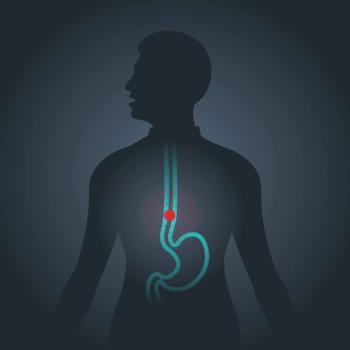
Oncology NEWS International
- Oncology NEWS International Vol 7 No 7
- Volume 7
- Issue 7
Good Response Rate With Combination Preop Therapy for Advanced Esophageal Cancer
NASHVILLE--Combined neoadjuvant therapy with paclitaxel (Taxol), carboplatin (Paraplatin), fluorouracil (5-FU), and irradiation, followed by surgery, resulted in complete pathologic responses in almost half of a group of patients with advanced esophageal cancer.
NASHVILLE--Combined neoadjuvant therapy with paclitaxel (Taxol), carboplatin (Paraplatin), fluorouracil (5-FU), and irradiation, followed by surgery, resulted in complete pathologic responses in almost half of a group of patients with advanced esophageal cancer.
Another third of the patients had only microscopic residual disease after surgery. Though median follow-up is only 7 months, the results are encouraging.
"This is one of the highest rates of pathologic complete response reported thus far," Anthony Meluch, MD, said at an ASCO poster session. "The follow-up is short at this point, but if the numbers hold up with continued follow-up, the results may have real meaning in the future."
In comparison to other trials that have used a standard cisplatinum-5-FU regimen, he said, "the toxicity profiles seem to be significantly better, and the surgical morbidity is acceptable."
Phase II Study
The findings came from a phase II clinical evaluation of the neoadjuvant chemoradiation therapy regimen in 49 patients with stages III-IV esophageal cancer.
All the patients had squamous cell or adenocarcinoma of the esophagus or gastroesophageal junction, and all were acceptable surgical candidates, said Dr Meluch, a medical oncologist with Tennessee Oncology and the Sarah Cannon Cancer Center, Nashville.
Neoadjuvant chemotherapy consisted of paclitaxel at a dose of 200 mg/m², carboplatin dosed to an AUC of 6, and 5-FU at a dose of 225 mg/m². The 5-FU was administered via 24-hour continuous infusion for 7 weeks. Paclitaxel and carboplatin were given during weeks 1 and 4.
Each patient had radiation therapy during weeks 1 to 6, at a dose of 180 cGy in 25 fractions for a total dose of 4,500 cGy. Restaging occurred during week 9, and surgery was performed on week 10 or 11.
Response Rates
Dr. Meluch reported that 41 of 49 patients completed therapy and were evaluable for response. The neoadjuvant regimen produced objective responses in 38 patients, all of whom were eligible for surgery. Subsequently, 34 of the 38 responders had surgery, which was definitive in 33 cases.
Among the 34 resected patients, 17 had a pathologic complete response. An additional 12 patients had a partial response with microscopic residual disease. The remaining five patients each had a partial response with macroscopic residual disease.
At a median follow-up of 7 months, 27 patients remain alive with no evidence of relapsed disease. Three other patients are alive after relapse. One-year survival in the cohort is 68%, and 2-year survival is 54%.
Dr. Meluch said that the neoadjuvant regimen was well tolerated, and adverse effects of therapy affected neither the feasibility of surgery nor the perioperative morbidity or mortality. Grade 3-4 leukopenia occurred in 30 patients, but severe thrombocytopenia and anemia were uncommon.
Nonhematologic toxicities were infrequent and generally mild, with esophagitis (14 cases grade 3-4) and dehydration (10 cases grade 3) the most common.
"The pathologic complete response rate of 46% compares favorably with previously reported neoadjuvant regimens, which had complete responses in the range of 23% to 42%," Dr. Meluch said. "The response was similar in squamous cell and adenocarcinoma histology."
Dr. Meluch said that the researchers plan to continue patient accrual and complete the trial, to define the therapys impact on survival. "We think that evaluation of the regimen in a phase III trial may be warranted."
Articles in this issue
over 27 years ago
Calling the National Cancer Instituteover 27 years ago
Six Cycles of AT Found Safe in Advanced Breast Cancerover 27 years ago
New Drug Promising in Advanced Pancreatic Cancerover 27 years ago
Herceptin/Chemo Effective in Metastatic Breast Cancerover 27 years ago
Virtual Reality Exhibit Simulates Cancer Fatigueover 27 years ago
New Director of AIDS Researchover 27 years ago
Exhibit Explores Healing Power of Creating Artworkover 27 years ago
Update on Trials of Thrombopoietin for Platelet Recoveryover 27 years ago
Amifostine Reduces Xerostomia After RT for Head and Neck Cancerover 27 years ago
National Survey Documents Gap in Quality of HIV/AIDS CareNewsletter
Stay up to date on recent advances in the multidisciplinary approach to cancer.































































































